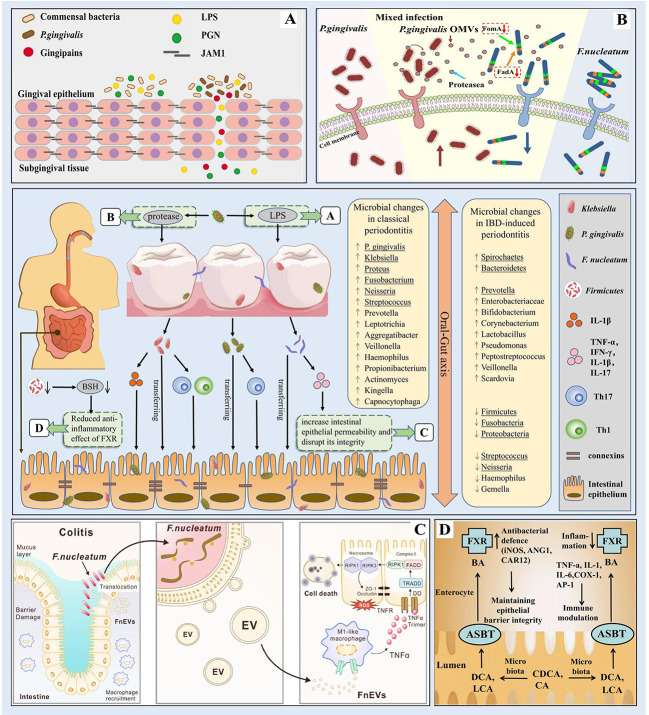Figure 2.
Microbial correlation between periodontitis and IBD (The bacteria underlined in the diagram are the ones mentioned in our paper). In periodontitis, the oral flora is altered and P. gingivalis evades host immune defense to destroy periodontal tissue by releasing virulence factors such as proteases and lipopolysaccharides; alterations in the composition of the intestinal microbiota leading to changes in bacterial metabolites such as BSH may play an important role in the pathogenesis of IBD; through the oral-gut axis, periodontal pathogenic bacteria such as Klebsiella, P. gingivalis, and F nucleatum can ectopically colonize the intestine and disrupt the intestinal barrier thus leading to intestinal ecological dysregulation and chronic inflammation. (A) P. gingivalis produces virulence factors such as LPS. Source (Takeuchi et al., 2019). (B) P. gingivalis produces virulence factors such as proteases. Source (Zhang et al., 2021d). (C) F nucleatum destroys the intestinal mucosa. Source (Liu et al., 2021b). (D) The role of FXR in IBD. Source (Ding et al., 2015).

